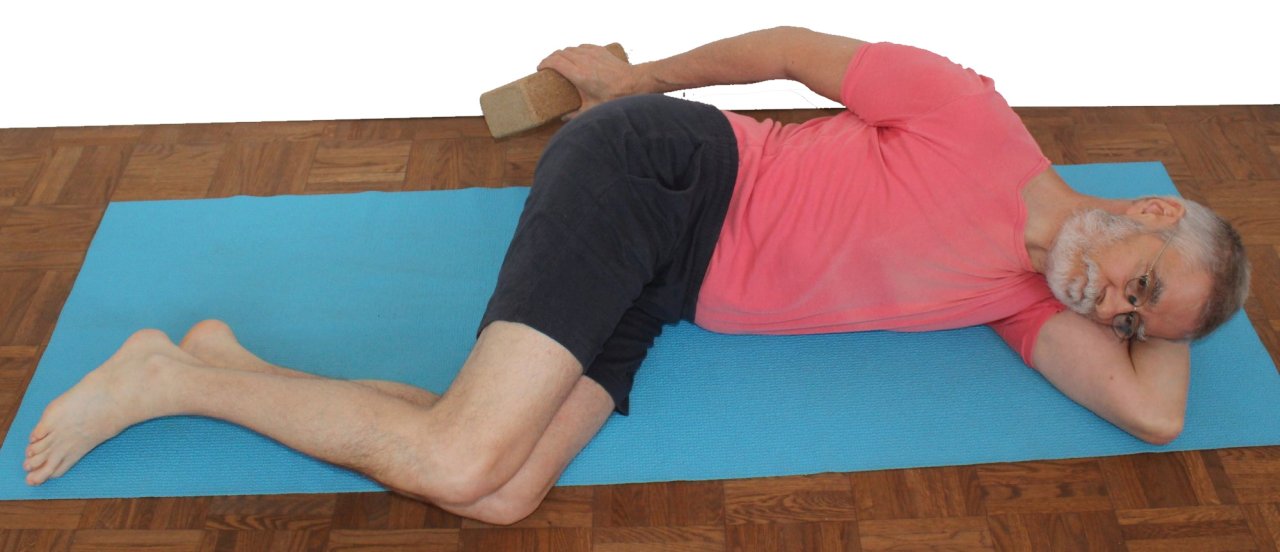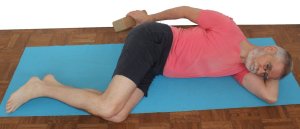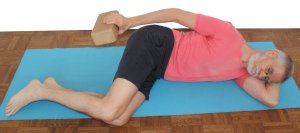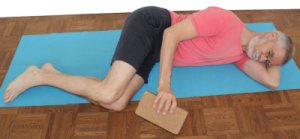yogabook / functional exercises / supraspinatus training

Detailed images
 |  |
 |
| starting position | mid position | end position |
supraspinatus training
Feedback: We’d love to hear what you think about this description, give us feedback at:
postmeister@yogabook.org
last update: 30.12.2018
Name: maricyasana 1
Level: A
Classification
Functional exercise
Effects
Trains the supraspinatus with a predominantly long sarcomere length, which can contribute to its relaxation and increased resilience to everyday demands.
Instructions
- Lie on your side on the contralateral side as the supraspinatus is to be trained. The legs are only slightly bent.
- hold a light dumbbell with an overhand grip in your upper hand
- Move the dumbbell from a position close to the floor or placed on the floor behind the body just above the pelvis to a position just in front of the body on the floor or close to the floor, and back to the starting position with the elbow joint bent a few degrees.
- repeat as long as the execution is correct and controlled.
Details
- Biomechanical background: The supraspinatus is the initial lateral abductor that lifts the arm laterally before the deltoid with its three heads can reach a relevant torque. Once the arm is attached to the body, the line connecting some of the areas of origin of the deltoid to its insertion at about the middle of the lateral humerus almost passes through the glenoid or is even medial to it. Even with the hypomochlion effect of the humeral head, good torque cannot be achieved in this situation. The supraspinatus must therefore first perform an initial abduction from the applied position of the arm before the lever arm of the deltoid and its sarcomere length are favorable enough to forcefully abduct the arm.
- The design of this exercise allows the supraspinatus to always work at a more or less large sarcomere length, which counteracts hypertonus of the muscle and in the long term can lead to an adaptation of the force-length function of the muscle and to an increase in its strength, which should result in increased resilience to everyday demands and, in acute cases of hypertonus, usually provide noticeable relief.
- The legs should be bent as little as possible so that there is just enough stability so that they do not hinder the movement of the arm.
- The elbow joint should be almost, but not fully, extended.
- An existing tennis elbow is usually a contraindication, as the characteristic pain is likely to be triggered repeatedly. In this case, however, it should be possible to work with a widely pronated forearm.
- This exercise is very similar to the side raise in lateral position, except that it involves further lateral abductions of up to 70°.
